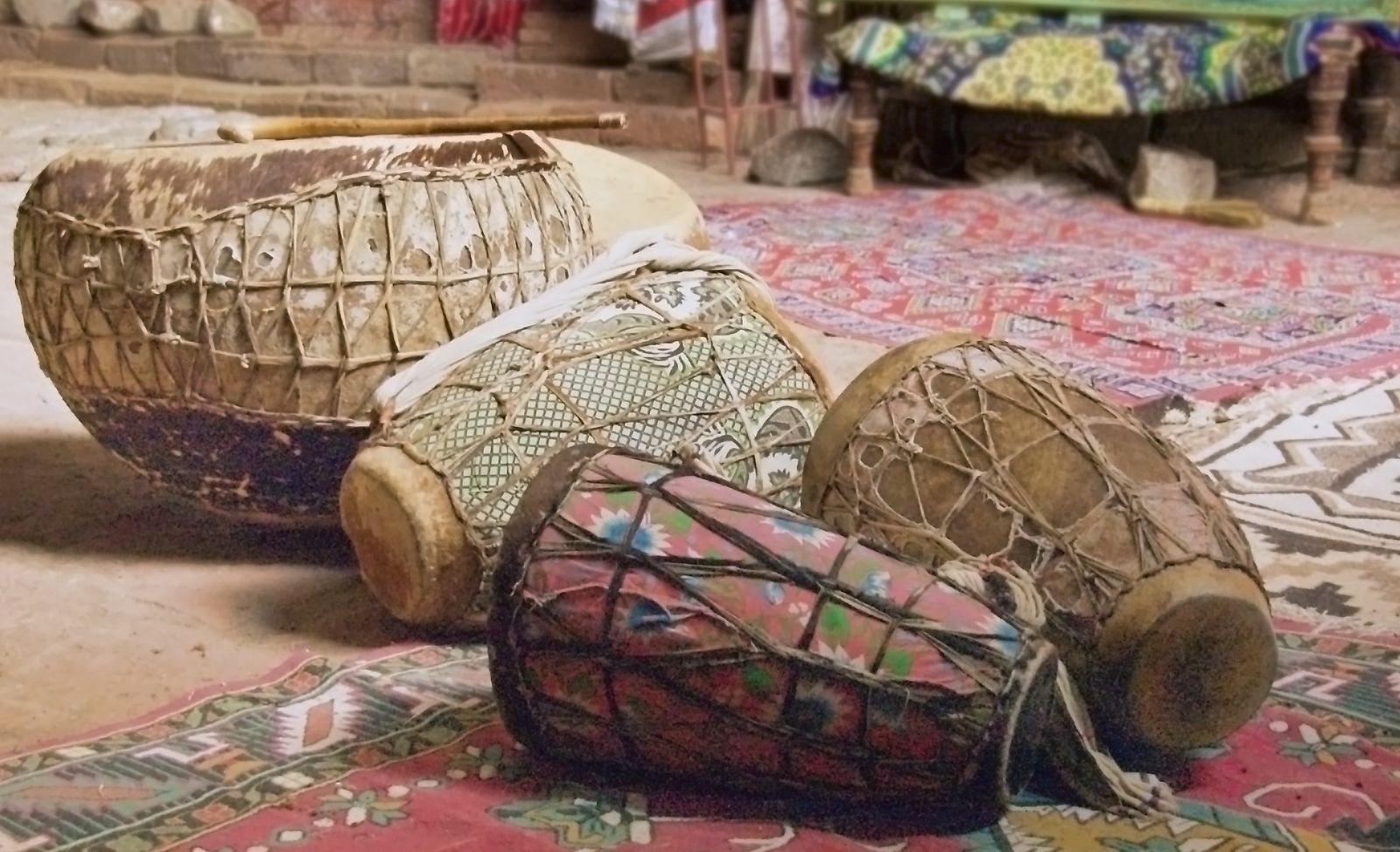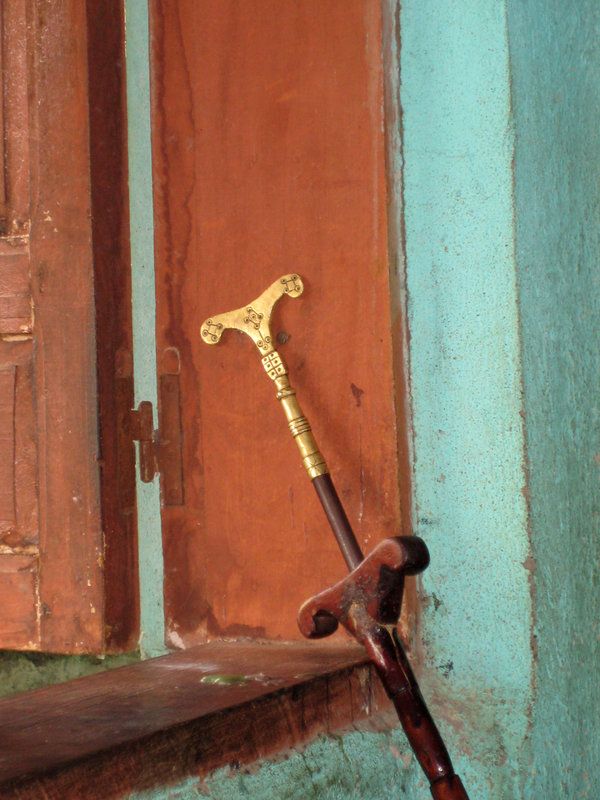
Introduction

Around 535 AD1, Emperor Kaleb, one of the most renowned, if not the most renowned Aksumite emperors, passed away. Both indigenous traditions and external Greek sources recount that Emperor Kaleb abdicated his throne to become a monk in Abba Pantelewon’s church. According to some accounts, he also sent his crown to Jerusalem, dedicating it to the Holy Sepulchre as a symbol of his deep devotion to Christianity. For his remarkable piety, Kaleb is venerated as a saint in both the Ethiopian and Eritrean Churches, as well as in the Eastern Orthodox and Catholic Churches. His saintly name is Elesbaan, and he is commemorated on the 28th of May in the Ethiopian and Eritrean Churches. He is believed to have died at Abba Pantelewon’s church, and buried in the tomb nearby2.
Upon his abdication, Emperor Kaleb left three sons as rightful heirs to the Aksumite Empire: Gebre Krestos (Servant of Christ), Gebre Meskel (Servant of the Cross), and Israel3. Traditional sources offer conflicting accounts of the events that unfolded after Kaleb’s abdication, but one thing is clear—chaos ensued as the brothers vied for the throne. Israel briefly ascended to power, but Gebre Meskel soon claimed the throne and became emperor. Traditional accounts and imperial lists suggest that Israel’s reign was extremely brief, lasting less than a year, in addition to this some coins attest to his rule.
The Historian Sergew Hable Selassie tells of one particular traditional account of the events that occurred during Kaleb’s succession:
If this traditional account is to be believed, it means Aksumite control southwards, had reached Shewa by at least mid-6th century AD.

Emperor Gebre Meskel (~535AD-548AD)
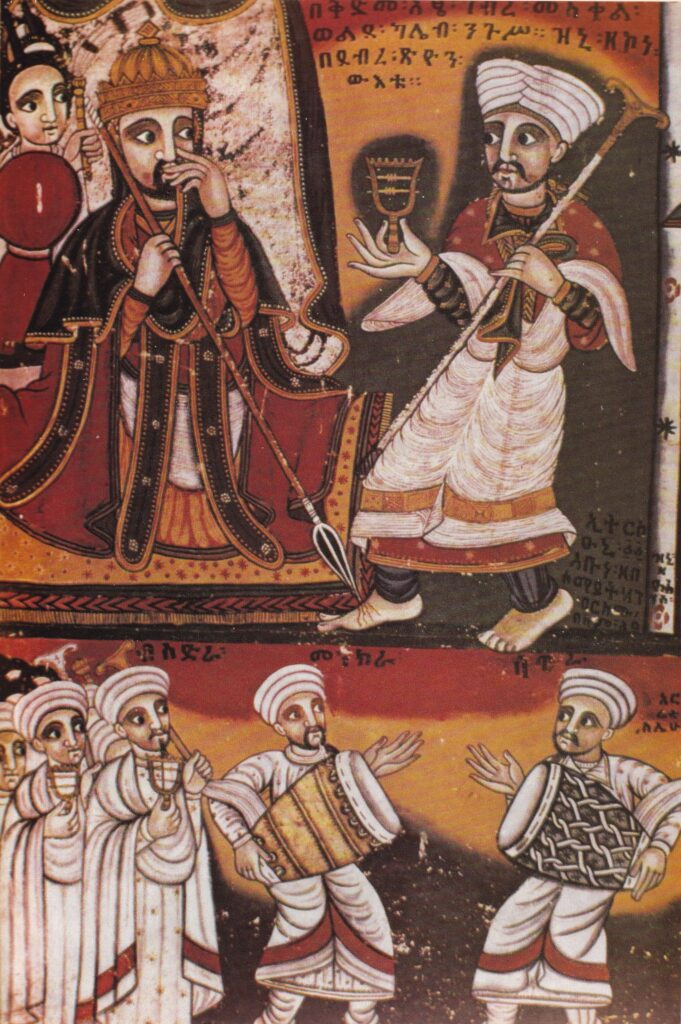
After the brief reign of Emperor Israel, the throne passed to Gebre Meskel. Unlike his father Emperor Kaleb, Gebre Meskel is not renowned for grand conquests or quelling rebellions. Instead, his legacy is marked by the significant advancements in the liturgy, culture, and architecture of the empire during his reign. Numerous churches were commissioned and constructed under his patronage, including those for the Nine Saints, such as Abba Afse church in Yeha, Debre Damo and Zuramba in Gayant, South Gondar4. One traditional story goes that Zauramba was built because Abba Aregwi had a vision where he was ordered by heavenly bodies, to build a second church on a mountain like that of Debre Damo5. Saint Yared would go on to spend over a decade teaching at this church.
The name ‘Zuramba’ is derived from the words ‘zur’ (to go around) and ‘amba’ (mountain). Tradition states that a saint advised Abba Aragawi to go around the mountain, to find the location to build the new church 6

According to traditional sources, Gebre Meskel is believed to have travelled to Jerusalem and built a church in Nablus, a city in the modern-day West Bank. However, Arabic sources claim that it was Antioch in Syria where he attempted to build the church, though this mission ultimately failed when the ship carrying the materials sank near Jeddah7. When messengers asked what should be done, Gebre Meskel allegedly responded that the remaining wood could be used to rebuild the Ka’aba. The authenticity of this account, however, remains questionable. The story goes as follows:
Gebre Meskel would reign for nearly 14 years, and thus pass away around 548AD8.
Saint Yared
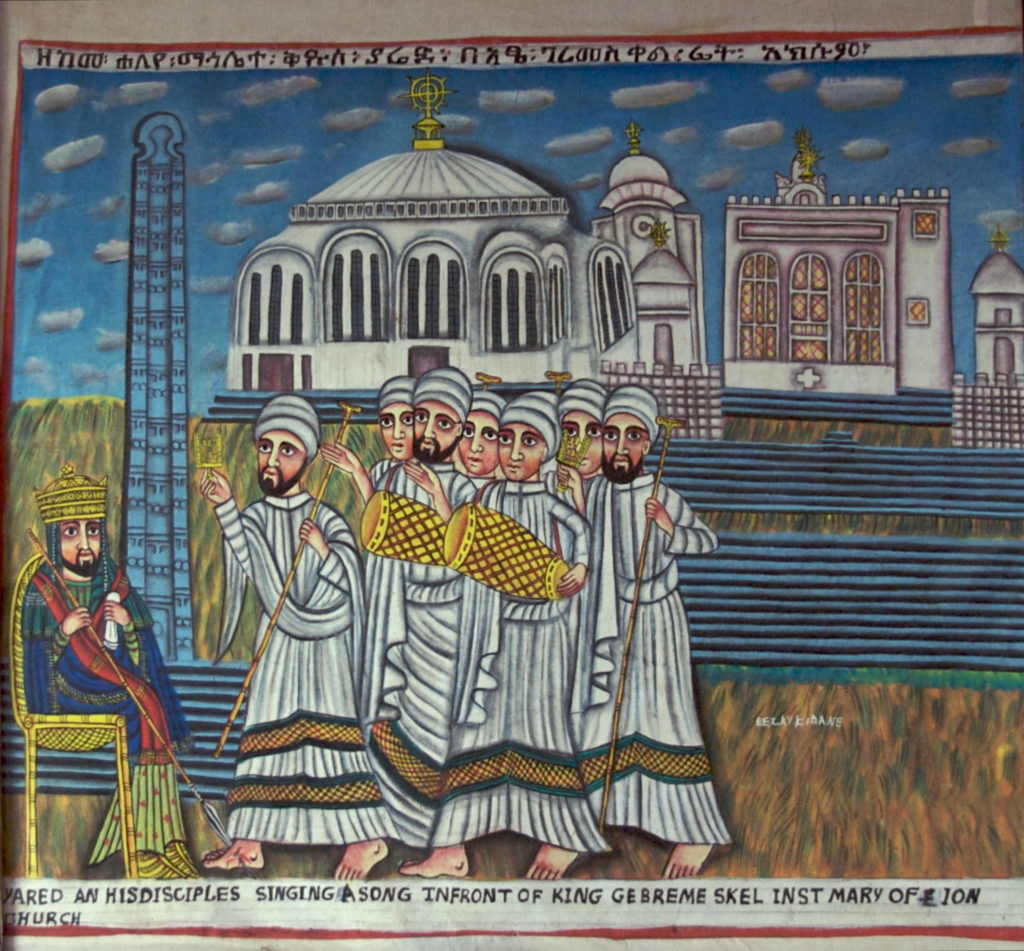
The most celebrated event during Gebre Meskel’s reign was the flourishing of Habesha liturgical music, spearheaded by the renowned composer Saint Yared. According to tradition, Saint Yared was born in Aksum in 513 AD (505 AD in the Ge’ez calendar)9. His father, Isaac (also known as Aybud or Adam), and his mother, Christina (also known as Tawklia), hailed from a wealthy Aksumite family with strong ties to the church10. In his early years, Yared was tutored by Yishaq, a teacher in Aksum, where he learned the Ge’ez alphabet and began studying the Psalms11.
After the death of his father when Yared was around seven years old, his mother entrusted his upbringing to his uncle Gedewon, a priest and biblical scholar who became a father figure to him12. Yared continued his studies at the Church of St. Mary of Zion in Aksum, where he struggled initially to memorize the Psalms. Known for being an impatient learner, his constant failure led to punishments by Gedewon13. Disheartened, Yared decided to flee back to his mother. However, while resting under a tree on his journey, he observed a caterpillar (or, in some accounts, an ant/grasshopper) repeatedly attempting to climb the tree. Despite falling six times, the creature persevered and finally reached the fruit on the seventh attempt14.
Inspired by the persistence of the small creature, Yared learned a valuable lesson about hard work and perseverance, thus he returned to his uncle with renewed determination. He dedicated himself to his studies, ultimately mastering the Psalter and memorizing both the Old and New Testaments15. Yared went on to become a deacon at the Church of Our Lady Mary Zion in Aksum and later a priest, and he taught for sixteen years16.
Liturgical works
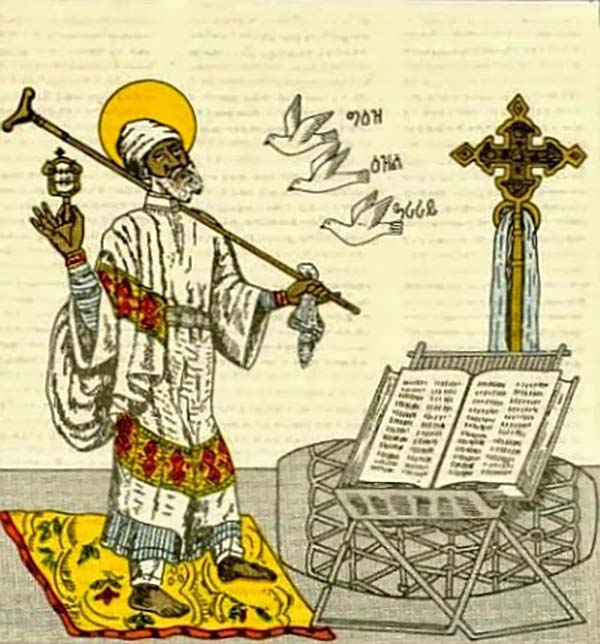
Saint Yared revolutionized the liturgical music of the Aksumite Church by introducing vibrant new elements, including vocal singing and the use of instruments. Before his influence, liturgical chanting was performed softly, almost in a murmur, but Yared transformed it into louder & more powerful hymns. According to tradition, Yared claimed to have visited Constantinople twice17, where he likely observed and absorbed elements of Byzantine liturgical music. His close connection with the Nine Saints, who had extensive experience throughout the Mediterranean, also likely influenced his musical compositions.
Tradition states to the contrary, rather it was through divine revelation that Yared introduced these techniques. Specifically, it states that God sent three angels to reveal three heavenly chants, these angels came in the form of three birds, these birds sang these three chants to him and praised Yared, they then carried him to heaven where the trinity imparted the knowledge of heavenly songs in him, he also saw the angels playing musical tunes using instruments such as the Kebero (Drum), Begena (harp), Tsenatsil (sistrum – rattling instrument), Masenquo (violin), Washint (flute) and the Mequamia, which is a stick used for tapping sounds & as support during long church services18. He then was returned back to Aksum. Imparting this knowledge to his clergy by introducing these instruments into his hymns, in addition to creating musical signs & symbols.
Instruments
Chants
Specifically, the three modes of chants that he introduced were19:

Books & Later Life
Saint Yared also wrote five liturgical books, each containing several hymns to be sung at specific times throughout the year, these books are as follows20:

Digua (also spelled as Diggua), is his most cited work, Digua means lamentation in Tigrinya. This book contained a collection of hymns in the form of poems that cited not only biblical passages but also Yared personal opinions and philosophies regarding biblical characters, events and situations, in addition to historical summaries of the nine saints. For example, he says the following:
Saint Yared also introduced Qine, which is where a prospective liturgical student is tasked with creating a poem following strict rules (such as the number of verses allowed), thereby teaching Ge’ez vocabulary, grammar and syntax21.
Saint Yared also created 10 different forms of notation to be using in liturgical hymns:

Saint Yared’s musical genius earned him a close relationship with the imperial court, where he captivated the monarchy with his performances22. It is traditionally believed that during the reign of Gebre Meskel, the festival of Hosanna (Palm Sunday) was introduced. This festival commemorates Jesus’ triumphant entry into Jerusalem, where he was greeted with palm leaves by the local inhabitants as he rode a donkey. Additionally, Yared is credited with establishing a religious ceremony to be held before the coronation of new emperors, further intertwining music and royal tradition.
In one Interesting traditional tale, Yared is performing for Emperor Gebre Meskel, and while both were fully captivated by the music, the Emperor accidentally moved his spear (Spears were part of the Aksumite royal regalia – both coins minted by Aksumites and foreign ambassadors such as the roman ambassador Nonnosus describe this) thereby piercing Yareds foot, however because both were so enthralled by the music, none noticed until Yared finished his song. When the Emperor noticed, he apologized to Yared & offered him a reward for the trouble he had caused. Yared asked to be in peace, living as a monk alone in the Simien mountains. Thus even though much of the royal court and the people of the empire were saddened by this, Yared was allowed to depart, or else the Emperor would be an oathbreaker. Yared never came back and died on the 19th of May (11 Ginbot) in 571AD, which is the same day his celebrated in both the Ethiopian & Eritrean Orthodox Churches.23

The following describes the life of Saint Yared according to the traditional text “The Book Of The Saints Of The Ethiopian Church”:

Additional Reading
Check out the forum page about this article for links to books & websites used & for further reading
The following YouTube video not only briefly explains Saint Yarid’s life but also includes numerous performances of his chants :
Bibliography
- Ancient And Medieval Ethiopian History to 1270, pg 143 ↩︎
- Ancient And Medieval Ethiopian History to 1270, pg 143 ↩︎
- Ancient And Medieval Ethiopian History to 1270, pg 159 ↩︎
- Ancient And Medieval Ethiopian History to 1270, pg 162 ↩︎
- https://en.sewasew.com/p/zuramba-(%E1%8B%99%E1%88%AB%E1%88%9D%E1%89%A3) ↩︎
- https://en.sewasew.com/p/zuramba-(%E1%8B%99%E1%88%AB%E1%88%9D%E1%89%A3) ↩︎
- Ancient And Medieval Ethiopian History to 1270, pg 163 ↩︎
- Ancient And Medieval Ethiopian History to 1270, pg 166 ↩︎
- https://youtu.be/aWeyViVSrqU (42:24) ↩︎
- https://www.abbayesehaq.com/htm/yared.htm ↩︎
- https://www.styaredcuisine.com/about.html ↩︎
- https://www.styaredcuisine.com/about.html ↩︎
- Ancient And Medieval Ethiopian History to 1270, pg 165 ↩︎
- https://www.styaredcuisine.com/about.html ↩︎
- Ancient And Medieval Ethiopian History to 1270, pg 165 ↩︎
- https://youtu.be/aWeyViVSrqU?t=2811 (46:51) ↩︎
- Ancient And Medieval Ethiopian History to 1270, pg 165 ↩︎
- https://www.styaredcuisine.com/about.html ↩︎
- https://ethiopiangospelmusic.net/solo/yared-melodious/ ↩︎
- http://www.tadias.com/11/29/2007/st-yared-the-great-ethiopian-composer/ ↩︎
- Ancient And Medieval Ethiopian History to 1270, pg 168 ↩︎
- Ancient And Medieval Ethiopian History to 1270, pg 166 ↩︎
- Ancient And Medieval Ethiopian History to 1270, pg 166 ↩︎

